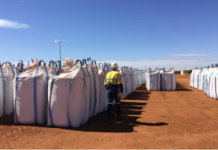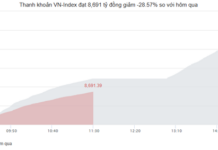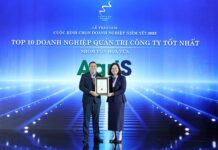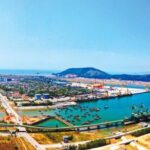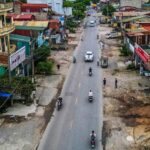To address the issue of underinvested infrastructure in the Nghi Son Economic Zone and transform it into a prominent coastal industrial, urban, and service center in Vietnam, Thanh Hoa has approved a land clearance proposal for the zone’s industrial parks.
FORMATION OF A STEERING COMMITTEE
To effectively implement the proposal, the Standing Committee of the Thanh Hoa Provincial Party Committee issued Decision No. 1887 to establish a steering committee (SC 1887) with 23 members, led by Secretary of the Provincial Party Committee Do Trong Hung. This move is considered a strategic breakthrough in infrastructure development, aiming to enhance Thanh Hoa’s investment attractiveness.
The proposal entails land clearance, construction of resettlement areas, and land clearance for Industrial Parks 6, 20, and 21 within the Nghi Son Economic Zone, with an investment of approximately VND 11,300 billion.
The total area requiring land clearance exceeds 1,500 hectares. Specifically, Industrial Park 21 will require VND 1,121 billion for clearing 395 hectares of land, Industrial Park 6 will need around VND 7,254 billion for 549 hectares, and Industrial Park 20 will require approximately VND 2,997 billion for 604 hectares.
According to the roadmap, from 2023 to 2024, the focus will be on land clearance and the construction of three resettlement areas, along with clearing 604 hectares of land in this industrial park. From 2023 to 2025, land clearance and the construction of four resettlement areas will be prioritized. Then, from 2025 to 2027, land clearance for Industrial Park 21 (395 hectares) and Industrial Park 6 (549 hectares) will be carried out.
For efficient proposal implementation, Secretary of the Provincial Party Committee Do Trong Hung instructed the members of SC 1887 to proactively perform their assigned tasks and closely coordinate with other members to achieve the committee’s goals.
Secretary Do Trong Hung emphasized that to initiate investment projects, land clearance is paramount. Moreover, to facilitate smooth land clearance, well-prepared resettlement areas for affected households are crucial. This work directly impacts the province’s socioeconomic development, the locality, and the people’s lives within the affected region. Therefore, authorities, sectors, and the entire political system must recognize their roles and responsibilities in this task.
EFFECTIVE STRATEGIES
To ensure effective land clearance and avoid complaints, Thanh Hoa has directed the districts, towns, and city to prepare sufficient resettlement land for compensation in the form of residential land for eligible cases, adhering to regulations before organizing land retrieval. Additionally, they have intensified propaganda and mobilization efforts, reaching out to each affected household to gain their agreement with the state’s policies and mechanisms.
For projects with pending land clearance, specific plans and measures have been implemented within the scope of authority. Notably, officers assigned to this task are experienced, practical, and possess good moral qualities, and constant monitoring is in place to facilitate timely rewards, commendations, and disciplinary actions.
A notable example is Tho Xuan district, which, from March 15 to April 30, 2024, conducted a 45-day intensive land clearance campaign for ten investment projects, encompassing a total area of 85.37 hectares and affecting 784 households. Immediately after the launch, the party committees, authorities, and functional agencies at the district and grassroots levels took decisive action, implementing synchronized solutions. Consequently, compensation for land clearance was provided to 770 out of 784 households, covering 79.38 out of 85.37 hectares, which equates to 92.98% of the plan, with a total cost of over VND 73.2 billion.
For instance, the new residential area project along the 506B road in Tho Lap commune, Tho Xuan district, spans 8 hectares, with the first phase covering 2 hectares and impacting 59 households. After 45 days of the district’s intensive land clearance campaign and the proactive engagement of the entire political system, coupled with enhanced propaganda and mobilization efforts, all 59 households agreed to receive compensation and hand over the land for project implementation.
Mr. Thai Huu Cuong from Yen Truong hamlet, Tho Lap commune, Tho Xuan district, shared, “My family had one sào of land subject to retrieval. After receiving an explanation, I found the policy to be in line with the people’s interests, so I voluntarily accepted the compensation and handed over the land for the project.”
Mr. Le Hai Hue, Secretary of the Party Branch of Yen Truong hamlet, Tho Lap commune, Tho Xuan district, added, “By staying close to the people, we understood their aspirations and concerns, enabling us to propagate and explain effectively, thus achieving a high level of consensus among the people. As a result, the households promptly handed over the land for project implementation.”
Consequently, six out of ten projects in Tho Xuan district were swiftly completed within less than 45 days. These include the new residential area project along the 506B road from Tho Lap to Xuan Tin (in Tho Lap commune), the new residential area project in hamlet 5 of Xuan Sinh commune, the Dong Dinh and Dong Chua residential area project in hamlet 1 (phase 2) of Xuan Giang commune, the Dong Dan and Cua Lang – Nai Ha residential area project in Trung Lap 2 hamlet of Xuan Lap commune, the Xuan Lai residential area project (phase 2) in Xuan Lai commune, and the infrastructure project in Lam Son – Sao Vang Industrial Park (phases 2 and 3).

Nghi Son town, home to the Nghi Son Economic Zone and numerous key provincial projects, has a substantial land clearance workload. Mr. Nguyen The Anh, Chairman of the Town People’s Committee, shared, “For the projects, we assign tasks to each official, civil servant, and employee according to the ‘5 clear’ principle, which entails clarity in terms of personnel, tasks, progress, responsibility, and results. Simultaneously, we strengthen inspection, supervision, and urging to expedite land clearance progress in the town’s projects.”
Consequently, in 2024, Nghi Son was assigned to clear land for 59 projects, totaling 386.68 hectares. From January 1 to July 31, 2024, the town submitted for approval compensation plans amounting to over VND 243 billion for 2,618 affected households. Compensation plans exceeding VND 350 billion for 2,564 affected households have been approved, and nearly VND 370 billion has been disbursed to 2,676 affected households (including plans approved in 2023 that were carried forward).
So far this year, Nghi Son has completed disbursement and land handover for 236.18 hectares out of 386.68 hectares across 31 projects (equivalent to 61.08% of the 2024 plan). Among these, 12 projects have essentially concluded, with 100% of the land handed over.
Continuing the series of successes is Trieu Son district, which has become a favored investment destination in recent years due to its “clean” land fund. In the first seven months of this year, Trieu Son was among the 13 districts and cities in Thanh Hoa province with a land clearance rate of over 80% of the plan, with more than 101 hectares cleared, achieving 98.78%.

According to Mr. Luong Van Thinh, Director of the Trieu Son District Investment Project Management Board, during the implementation of key projects in the district, the District Party Committee and People’s Committee have always prioritized propaganda and mobilization to help people understand the policies, effectiveness, and benefits of public investment projects and comply with the law to hand over the land to the construction units on schedule.
The Trieu Son District Investment Project Management Board regularly meets with the communes and towns to identify difficulties and obstacles in each project and find solutions to remove bottlenecks, facilitating smoother project implementation.
“Land clearance is not a profession, but when assigned, each official must be flexible and draw on their experience and skills to ensure legal compliance while encouraging, sharing, and analyzing to achieve people’s consensus,” shared Mr. Thinh.
Each land clearance project presents unique challenges and opportunities. With over ten years of experience in various management boards and numerous land clearance projects, Mr. Luong Van Thinh understands that large-scale projects with significant workloads can be successfully cleared if thoroughly prepared and implemented in a synchronized manner. Conversely, small-scale projects may encounter challenges if approached with complacency and insufficient preparation.
For instance, when mobilizing people during land clearance, officials must thoroughly understand the project’s objectives to explain its benefits to the affected households. Additionally, they should scrutinize and study the legal regulations applicable to each land area to address the households’ concerns effectively. When officials provide detailed explanations, the rate of household consensus tends to be high.
Stay tuned for Part 3: Thanh Hoa Finds the Answer to the Land Clearance Conundrum: Reaping the Sweet Fruits
Unlocking the Secrets to Effective Land Clearance: Identifying Weaknesses
Site clearance and land handover to investors is one of the most complex and challenging aspects of project development. From 2020 to 2022, Thanh Hoa lagged in attracting foreign direct investment (FDI), with many key projects facing construction delays due to the intricacies of land clearance and the creation of “clean” land funds.
Determination to Complete Land Clearance for the Tam Trinh Road Construction Project by the End of September 2024
Under the direction of the Hoang Mai District Party Committee, the site clearance and compensation for the Tam Trinh Road construction project is expected to be completed by October 1, 2024. The relevant agencies and units are diligently working together to implement effective solutions and encourage local residents to cooperate and hand over the required land area for the project’s success.
Unlocking Opportunities: Quang Tri Unravels Challenges for a Key Project Worth Over VND 2,000 Billion
The Coastal Road Project, which aims to connect the East-West Economic Corridor in Quang Tri Province, is an ambitious undertaking with a total length of 48 kilometers. Phase 1 of this project, scheduled for completion between 2021 and 2026, has encountered numerous challenges that have impacted construction progress.

